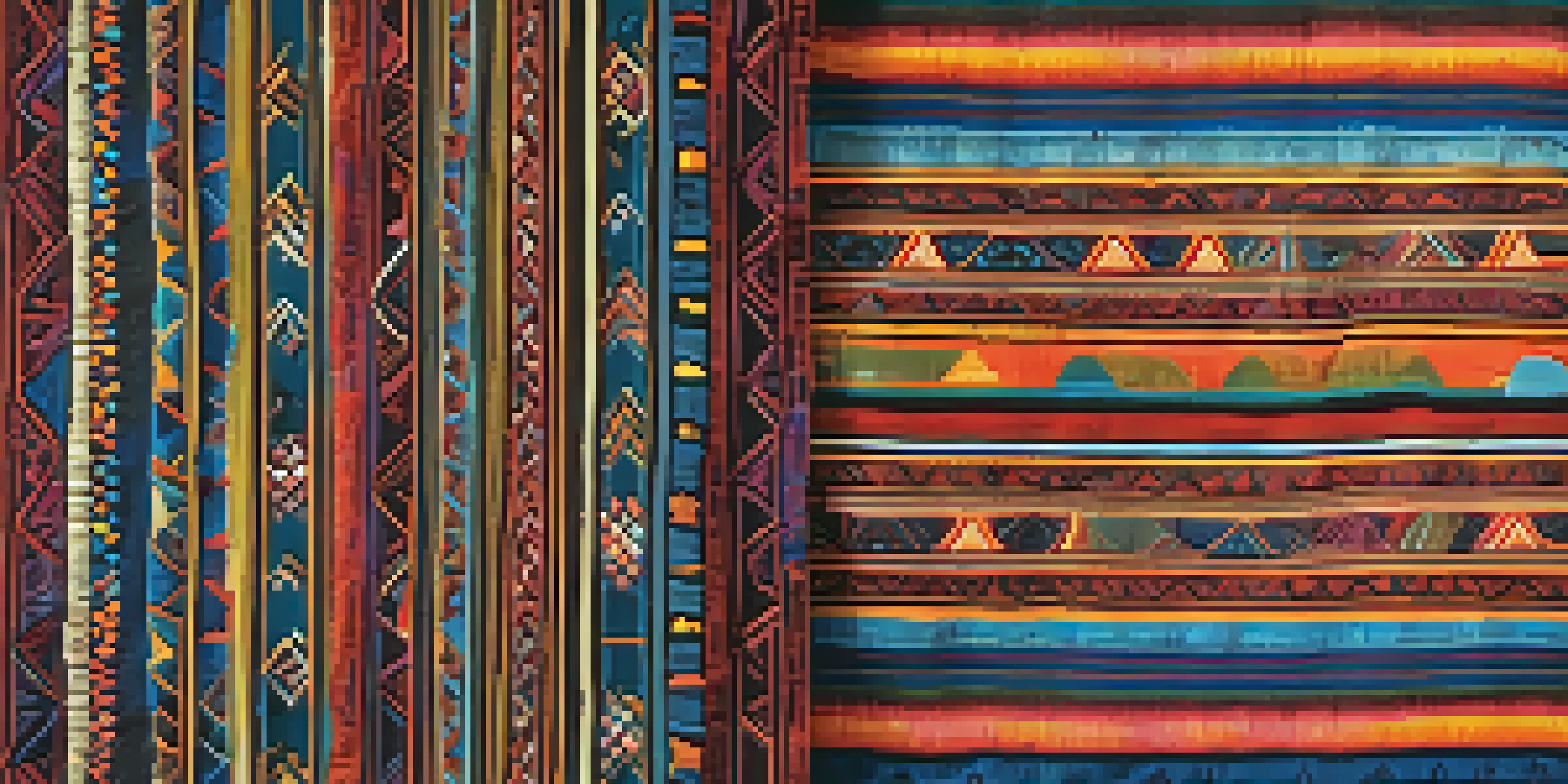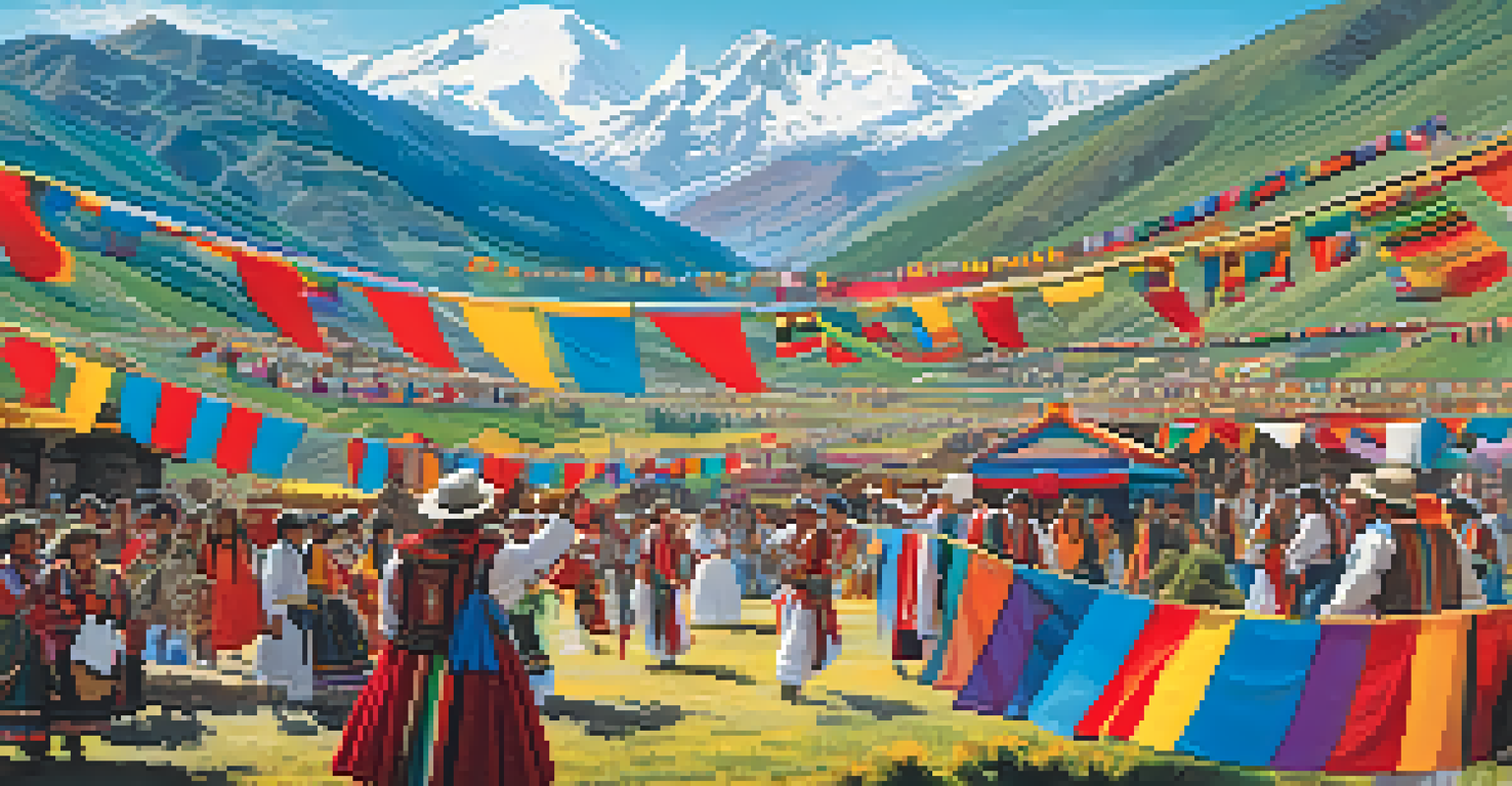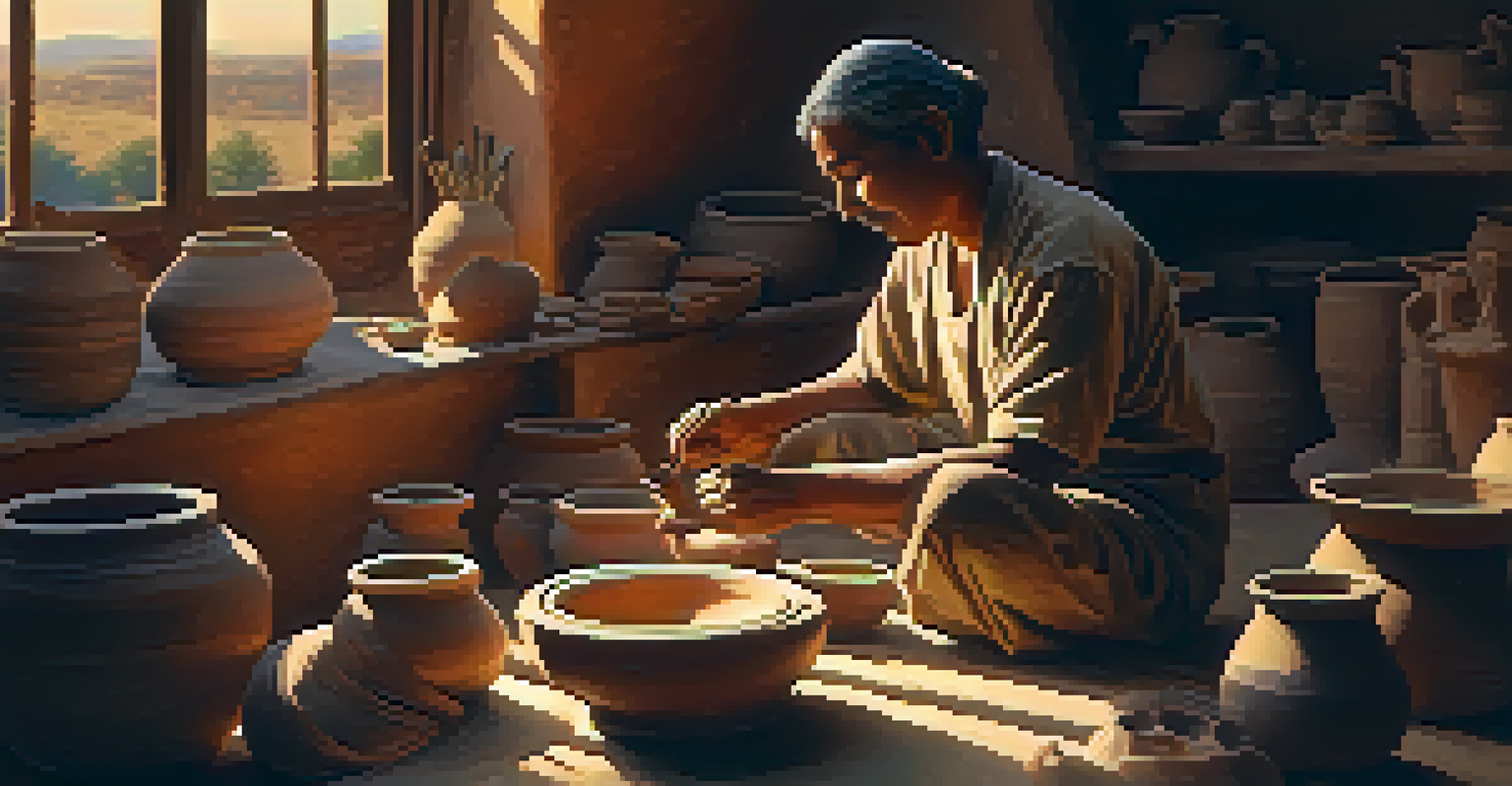Understanding the Symbolism in Peruvian Folk Art

The Cultural Significance of Peruvian Folk Art
Peruvian folk art is a vibrant tapestry woven from the country's rich history and diverse cultures. It reflects the influences of indigenous communities, Spanish colonization, and modern artistic expressions. Each piece tells a story, connecting generations and preserving traditions that might otherwise fade away.
Art is the most beautiful of all lies.
This art form isn't just about aesthetics; it's a way for artists to express their identity and beliefs. Through colorful textiles, intricate pottery, and detailed sculptures, they convey messages about their daily lives, spirituality, and the natural world around them. It's like holding a mirror up to society, revealing not just beauty but also deeper truths.
Moreover, folk art serves as a bridge between past and present, allowing new generations to engage with their cultural heritage. By understanding the symbolism within these artworks, we gain insight into the values, struggles, and dreams of the Peruvian people, making each piece a vital part of their collective narrative.
Common Themes in Peruvian Folk Art
When we look closely at Peruvian folk art, certain themes emerge that transcend individual styles and techniques. Nature plays a significant role, reflecting the country's stunning landscapes, flora, and fauna. Many artists depict animals, plants, and celestial bodies, all of which hold symbolic meaning in Andean culture.

Another prevalent theme is community and family. Many artworks illustrate daily life, festivals, and communal gatherings, emphasizing the importance of togetherness in Peruvian society. These pieces often feature vibrant scenes filled with people, showcasing the joy and warmth of shared experiences.
Cultural Roots in Folk Art
Peruvian folk art reflects the country's rich history and diverse cultures, preserving traditions and connecting generations.
Spirituality also weaves its way through the fabric of folk art. Artists often incorporate symbols tied to ancestral beliefs, such as the Pachamama (Mother Earth) and other deities, representing the connection between the people and their environment. This spiritual dimension adds another layer of meaning to the art, inviting viewers to reflect on their own relationship with nature and the divine.
Color Symbolism in Peruvian Folk Art
Color is a powerful tool in Peruvian folk art, each hue carrying its own significance. For example, red often symbolizes life and vitality, while green represents nature and fertility. The use of color not only enhances the visual appeal but also communicates deeper meanings.
Every artist dips his brush in his own soul, and paints his own nature into his pictures.
Artists skillfully combine colors to evoke emotions and tell stories. The vibrant palette can create a sense of joy and celebration, reflecting the exuberance of Peruvian culture. When we see these colors, we are not just looking at art; we are experiencing a spectrum of feelings and cultural narratives.
Moreover, the colors used in folk art can also signify regional identities. Different regions of Peru may favor specific color combinations, which helps to distinguish their unique artistic styles. This regional variation adds richness to the overall tapestry of Peruvian folk art and showcases the diversity of its cultural expressions.
The Role of Nature in Symbolism
In Peruvian folk art, nature is more than just a backdrop; it’s a central character. Artists draw inspiration from their surroundings—mountains, rivers, and wildlife—infusing their works with natural elements that hold symbolic value. For instance, the condor is often depicted as a symbol of power and freedom.
Through these natural motifs, artists communicate their reverence for the environment. The Andean worldview emphasizes harmony with nature, and this belief is reflected in the art. Each representation of flora or fauna serves as a reminder of the connection between humans and the Earth.
Nature's Symbolism in Art
Nature is a central theme in Peruvian folk art, with artists using natural elements to convey deep cultural and spiritual meanings.
Additionally, the changing seasons and cycles of life influence the themes in folk art. Artists might depict harvests, rain, or even the sun, showcasing the rhythms of life and the importance of agricultural cycles. This cyclical representation mirrors the interconnectedness of all living things, making nature a vital aspect of their storytelling.
Mythology and Folklore in Folk Art
Peruvian folk art is steeped in mythology and folklore, serving as a canvas for ancient stories and legends. Artists often draw upon tales of gods, spirits, and mythical creatures, bringing these narratives to life in their work. This connection to folklore enriches the art, making it a vehicle for cultural storytelling.
For instance, the figure of the serpentine 'Amaru' symbolizes wisdom and duality, often appearing in textiles and pottery. Such mythological elements not only captivate the viewer but also educate them about the rich tapestry of beliefs that shape Peruvian identity.
These stories are not just relics of the past; they remain relevant today, influencing contemporary artists. By weaving these narratives into modern works, they keep the traditions alive while inviting new interpretations. This blend of history and modernity creates a dynamic dialogue within Peruvian folk art.
Techniques and Materials Used in Folk Art
The techniques and materials used in Peruvian folk art are as diverse as the culture itself. Artists often employ traditional methods passed down through generations, such as weaving, pottery, and painting. Each technique carries its own significance and reflects the unique characteristics of the region.
For example, Andean textiles are renowned for their intricate patterns and vibrant colors, often created using natural dyes derived from plants and minerals. This commitment to traditional craftsmanship not only preserves cultural heritage but also enhances the authenticity of the artwork.
Globalization's Dual Impact
While globalization poses challenges to traditional folk art, it also provides new opportunities for artists to reach global audiences and innovate.
Additionally, the choice of materials plays a crucial role in the symbolism of the art. Clay, wool, and wood each have their own stories and meanings, connecting the artist to the land. By using locally sourced materials, artists honor their environment and create pieces that resonate with the spirit of their communities.
The Impact of Globalization on Folk Art
As the world becomes more interconnected, Peruvian folk art faces both challenges and opportunities due to globalization. On one hand, traditional artisans may struggle to compete with mass-produced goods that flood the market. This can threaten the survival of age-old techniques and the authenticity of folk art.
On the other hand, globalization also opens doors for Peruvian artists to showcase their work on international platforms. Social media and online marketplaces allow them to reach a wider audience, sharing their cultural heritage with the world. This exposure can foster appreciation and support for traditional art forms.

Moreover, the fusion of traditional and contemporary styles can lead to innovative expressions in folk art. Artists may blend modern themes with traditional techniques, creating pieces that speak to both local and global audiences. This evolution ensures that Peruvian folk art remains vibrant and relevant in an ever-changing world.